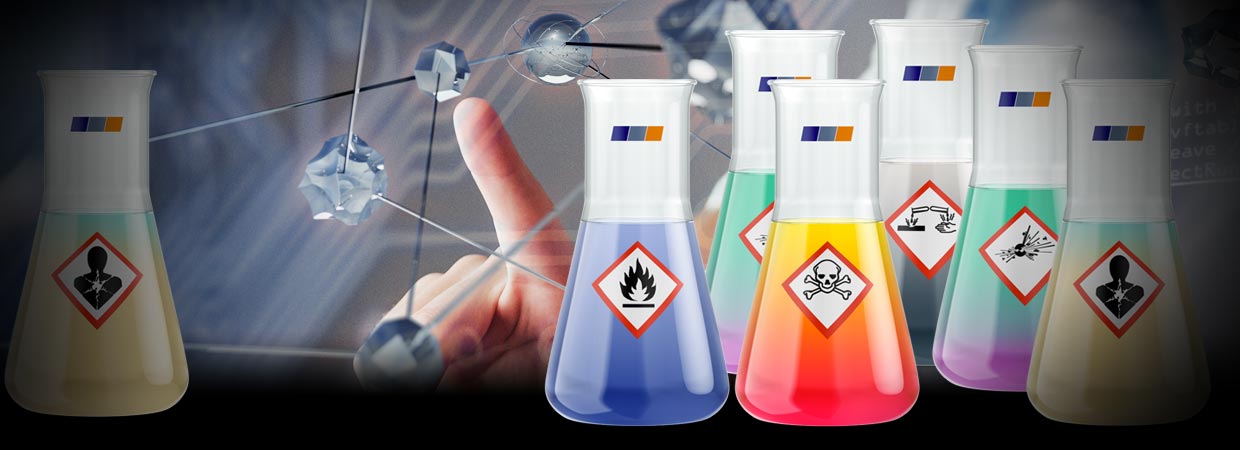WHMIS Classification, State's Matter | Kalium Solutions
When classifying a mixture, several criteria must be considered.
It’s not just about adding up the hazards of each of the ingredients. The classification of a mixture is far from being the sum of the pure substances that compose it. We need to go beyond simply enforcing regulations, do physical tests to support our decisions and ask ourselves at least a few questions. Was there a reaction between my ingredients? Has neutralization taken place? Is substance X still bioaccessible?
What is bioaccessibility?
Take titanium dioxide (TiO2) as an example, this product is used in many areas as a white pigment. This substance is classified as a suspected carcinogen (Category 2) by inhalation when in powder form. In this case, the classification of the substance has a condition. For it to be classified, there must be a possibility of inhalation of this substance.
Let’s mix our pigment with liquids or resins and make a paste, a paint or even toothpaste. During this process, the pigment was incorporated completely, and the powder was well coated.
According to the regulations, if the concentration of the substance exceeds the threshold limit for a specific class, the mixture will be classified. On the other hand, our paint does not meet the condition related to the classification of titanium dioxide since there will be no titanium dioxide particles in the air and the possibility of inhaling it is now impossible. In this case, our paint or toothpaste will not be classified as carcinogenic since titanium dioxide is no longer bioaccessible. However, if you write an SDS (Safety Data Sheet), you will have to disclose the ingredient without classifying it.
So why keep this classification if the marketed products are not carcinogenic?
The answer is to protect the health of workers who handle the raw material in powder form during the manufacturing of your finished products. Indeed, if I have titanium dioxide alone in powder, the dust in the air can be breathed in and the condition of classification is met. It is therefore very important for workers to be aware of the hazards associated with handling chemicals. This will allow them to wear the right personal protective equipment to protect themselves and their long-term health.
For more information or help with your classification, do not hesitate to contact us at 450 906-6999.

Design + hébergement : VisionW3.com



